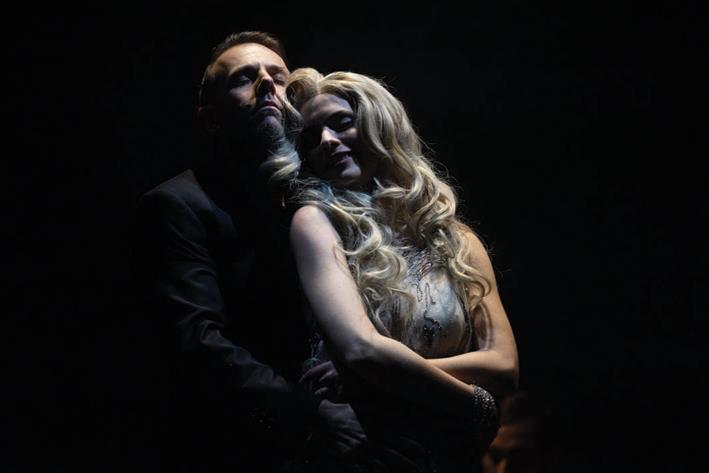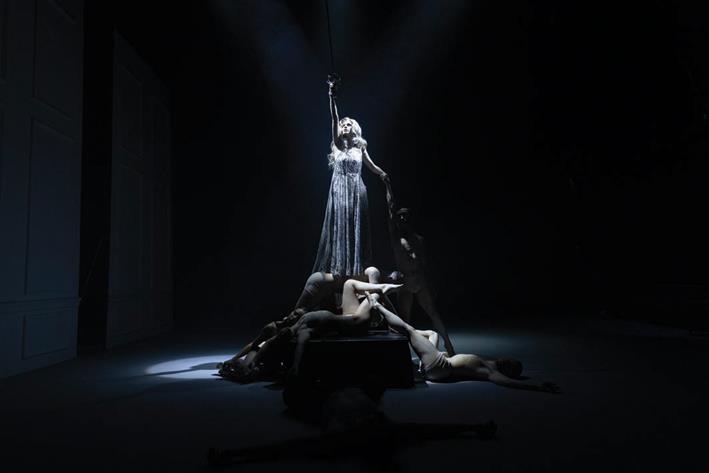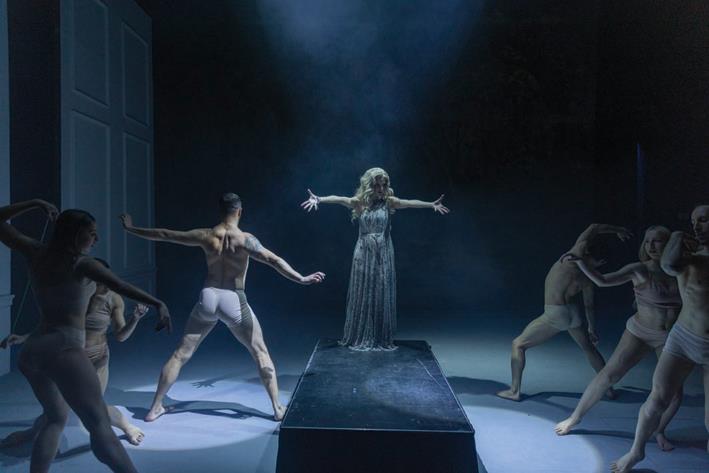March is opera month at Teatru Manoel... the month that will see Gioachino Rossini's Armida staged at Malta's National Theatre which will be the first time that this opera is being performed in Malta.
Armida is an opera in three acts by Italian composer Rossini to an Italian libretto by Giovanni Schmidt. It stars renowed soprano Elisa Balbo in the lead role along with Tenors Nico Darmanin, Cliff Zammit Stevens and Anle Gou, Eduardo Hurtado Rampoldi and bass Albert Buttigieg. The opera also features Kor Malta, the Malta Philarmonic Orchestra and Moveo Dance Company, with costumes designed by Luke Azzopardi.

Armida, which is directed by Paul Carr and conducted by Davide Levi, tells the story of this Saracen sorceress who uses her powers to bewitch and ensnare her Crusader enemies. This production will transport the audience to a world of magic, love, and betrayal. An opera which is a true testament of Rossini's genius with its intricate vocal lines, breath taking arias and thrilling ensemble numbers. It showcases the composer's ability to create music that is both technically demanding and emotionally resonant making it a true delight for opera enthusiasts and newcomers alike.

A deeper look at the scenery and costumes
The magnificent set of Armida will feature old opera scenery from the Teatru Manoel scenery store that were painted in Milan around the year 1900. Teatru Manoel's Artistic Director Adrian Mamo explains how up until the beginning of the twentieth century, most of the major theatres around Europe housed their own sets of theatre scenery that would be used for their opera productions time and time again, often on a yearly basis.

He explains how Malta's Royal Opera House at the entrance of Valletta, built in 1866 and then destroyed in 1940, held about 12-20 operas each season and used its stock of painted scenery. Teatru Manoel served as the main opera house prior to 1866, then for a brief period of 5 years when the ROH burned down in 1871, and then again after 1940.

Mamo said that Teatru Manoel commissioned scene painters in Italy to execute the required scenery, which consisted of full painted backcloths (fondali), front cloths (principali) and side scenes (fianchi). He adds that the theatre has in its possession dozens of original scenes painted by the scenography studio of Costantino Magni in Milan, around one hundred years ago. Some of the backdrops are generic and depict interiors such as a palace and a 'camera povera', as well as outdoor scenes, including a forest, a town centre and a village clearing. Other scenery was painted for particular operas, such as Sonnambula and Il Barbiere di Siviglia.

Luke Azzopardi, a well renowned designer spoke to us about the deliberate choice he had to make to transcend the conventional boundaries of the original time period of Rossini's Armida, opting instead for the enchanting, sensual backdrop of a whimsical contemporary world infused with the subtle provocation of fashion. As a couture designer, Luke said that it is a tremendous honour for him to lend his artistic sensibilities to the stage at Teatru Manoel.

In this reimagined rendition, Luke took a meta-narrative spin transforming the opera from a costume point of view into a captivating exploration of self-awareness within the operatic realm.
He explains how the chorus members usually relegated to the background now emerges as dynamic non-fictional personas embodying both all the characters within the opera as well as contemporary relatable individuals who reveal in the transformative power of couture. They step into the limelight not merely as supporting characters but as central figures in this narrative of sultry manipulation.

Luke observes that through the lens of couture, the stage becomes a canvas for the intersection of fashion and opera, weaving together an intricate tapestry of visual and auditory storytelling. The opera, in essence, becomes an opera about itself-an introspective piece that delves into the very essence of the art form. He adds that the characters, draped in couture, not only represent the narrative's progression but also serve as symbolic reflections of the transformative journey inherent in the world of opera.

As the couture-clad characters embody these non-fictional personas, the audience is invited into a world where opera is not merely a performance but a profound exploration of the creative process. Luke remarks that the whimsical contemporary setting serves as a bridge between the past and the present, drawing parallels between the timelessness of Rossini operas and the ever-evolving landscape of couture.

Luke explains how this reinterpretation, therefore, goes beyond the confines of a traditional staging where it embraces the meta-narrative, allowing the audience to witness not just the story of Armida but the opera's own reflection upon itself. The transformative power of couture becomes a metaphor for the evolutionary journey that opera-making undergoes, creating a synergy between two art forms that, at first glance, may seem disparate but, in reality, share a profound connection in the realm of artistic expression.




Performances of Armida will take place on the main stage of Teatru Manoel on the 3rd, 6th, 8th and 10th March at 7.30pm. For more information on the production and to purchase tickets, visit www.teatrumanoel.mt.
Photos: Sebio Aquilina
